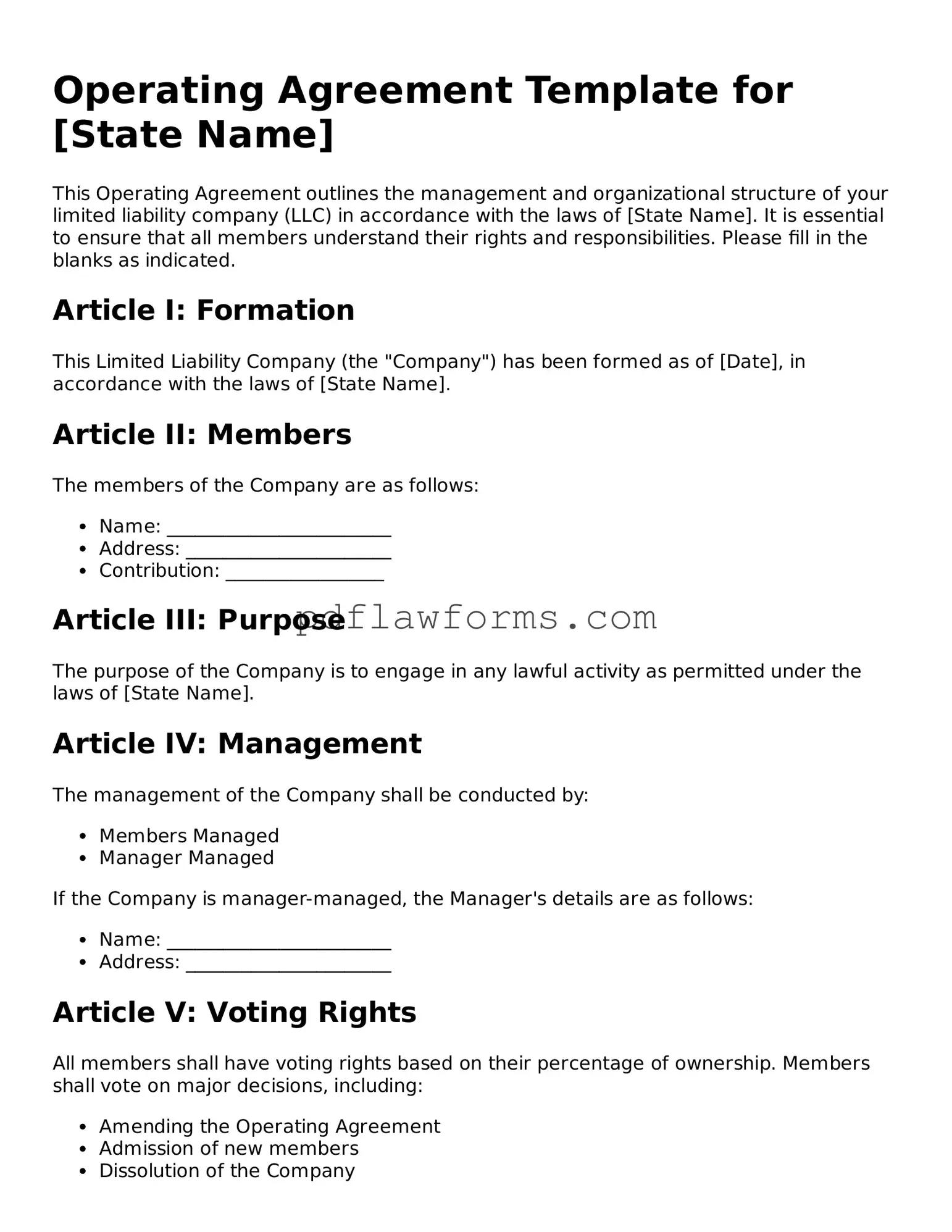Filling out an Operating Agreement form is an essential step for any business entity, particularly for LLCs. However, many individuals make mistakes that can lead to complications down the line. One common error is failing to specify the management structure. Without clear definitions, it can become challenging to determine who has decision-making authority, which can lead to disputes among members.
Another frequent mistake is neglecting to include the percentage of ownership for each member. This information is crucial, as it dictates how profits and losses will be distributed. Omitting this detail can result in misunderstandings and disagreements regarding financial matters.
Some individuals overlook the importance of outlining the roles and responsibilities of each member. Clearly defining these roles can prevent confusion and ensure that all members understand their obligations. When roles are vague, it can create friction and inefficiency within the organization.
Additionally, many people forget to address what happens in the event of a member’s departure or death. This oversight can lead to significant challenges for the remaining members. Including a buyout clause or a plan for succession is essential for maintaining stability within the business.
Another mistake is not updating the Operating Agreement as the business evolves. As circumstances change, so too should the agreement. Failing to revise the document can leave the business vulnerable to legal issues or mismanagement.
Some individuals mistakenly believe that a verbal agreement is sufficient. However, without a written document, there is no official record of the terms agreed upon. This can create significant legal challenges if disputes arise in the future.
Moreover, not seeking legal advice when drafting the Operating Agreement can lead to oversights. While it may seem straightforward, professional guidance can help ensure that all necessary provisions are included and compliant with state laws.
Many people also forget to include a dispute resolution process. Without a clear method for resolving conflicts, disagreements can escalate and potentially harm the business. Establishing a procedure for mediation or arbitration can help maintain harmony among members.
Finally, failing to have all members sign the Operating Agreement can invalidate it. All parties involved should review and sign the document to ensure that everyone is in agreement with the terms. A signed agreement provides a layer of protection for all members and reinforces the legitimacy of the document.
